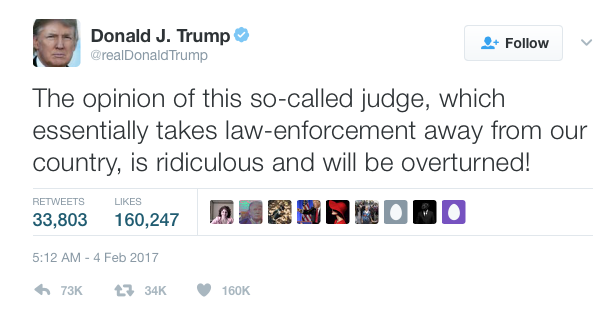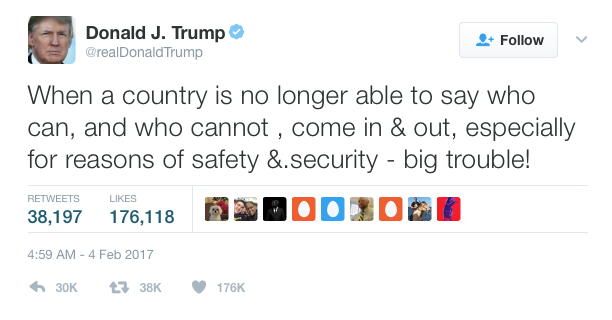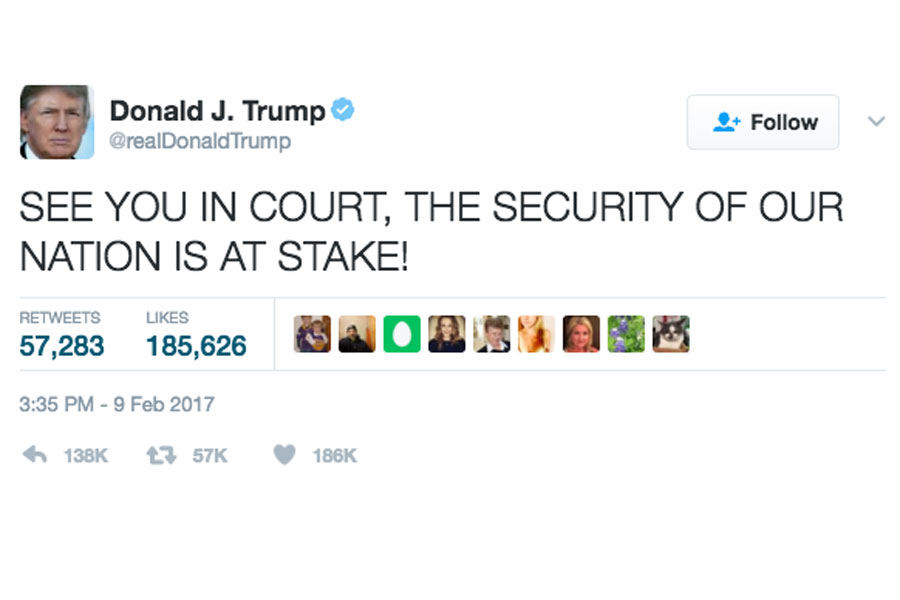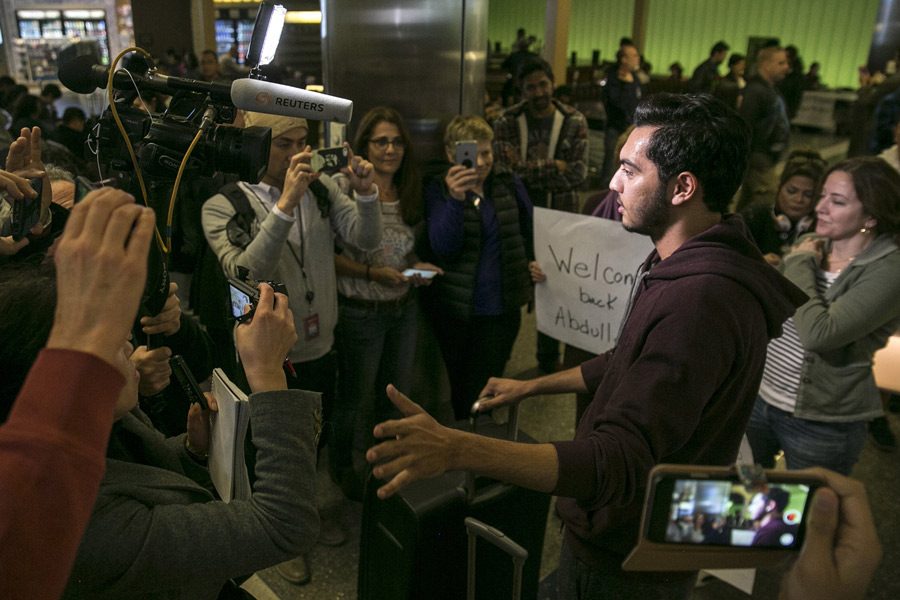Trump’s travel ban issued then halted
An executive order barring immigration from the Middle East stirs up controversy within Executive and Judicial branches
Abdullah Al Rifaie is interviewed by journalists after being greeted at Los Angeles International Airport by family a week after he was stuck outside the U.S. as part of the Trump administration travel ban. Photo by Robert Gauthier
“Whenever the President finds that the entry of any aliens or of any class of aliens into the United States would be detrimental to the interests of the United States, he may by proclamation, and for such period as he shall deem necessary, suspend the entry of all aliens or any class of aliens as immigrants or nonimmigrants, or impose on the entry of aliens any restrictions he may deem to be appropriate.”
Every day, the news changes: back and forth, back and forth, back and forth. The overall confusion, yet utter importance of President Trump’s immigration ban has been the talk of the nation.
Seven countries in the Middle East have been barred from entry to the U.S. on the
executive order of Trump: Iran, Iraq, Syria, Sudan, Libya, Yemen and Somalia. On Jan. 27, seven days after his inauguration, Trump signed the order to restrict all foreign immigration from the listed nations for 90 days.
The nations directly affected by the ban are, for the most part, Muslim populated. This has caused mixed responses from all over the world: some feeling as though the order is discriminatory against Muslims and refugees, while others think the action is a step in the right direction to counter the effects of terrorism.
The supporters of the ban use the U.S. Code on “Inadmissible aliens” to defend the president’s actions.
Days after the order was issued, Sally Yates was fired as Attorney General because of her failure to defend the immigration ban.
On Feb. 3, The State of Washington filed a lawsuit to battle President T
rump’s order, The State of Washington v. Donald Trump, et al. The State is trying the constitutionality of Trump’s immigration ban, with varied responses from thousands of Americans.
John Robart, District Court Judge for the Western District of Washington, halted the immigration ban on the grounds that it is a large burden to state governments and citizens of the nation.
Trump’s administration responded passionately to the decision, finding it unnecessary and unlawful.

 The next day, Feb. 4, the Department of Homeland Security enforced Robart’s ruling, reinstating previous immigration laws.
The next day, Feb. 4, the Department of Homeland Security enforced Robart’s ruling, reinstating previous immigration laws.
The halting of Trump’s executive order by no means terminates it completely. Investigations and arguments are being prepared by the Trump administration, DOJ, DHS and other parties in support or opposition of the ban.
On Feb. 9, the Ninth Circuit Court of Appeals denied the government’s attempt to reinstate the travel ban. Clearly unsatisfied by the court’s decision, President Trump tweeted again tweeted about the situation.

Trump and his administration plan to take the issue to higher courts, perhaps even the Supreme Court. The battle over the immigration ban seems to be far from over, and compromise appears to be far from sight.
[graphiq id=”eoAxjZegwrr” title=”Poll: Attitudes on Trump’s Immigration Ban” width=”600″ height=”598″ url=”https://w.graphiq.com/w/eoAxjZegwrr” ]

rickycooks@tigertimesonline.com
Disappointedly standing at 6 feet, Ricky Cooks is Texas High’s nicest yet sassiest student. As Student Body President,...



